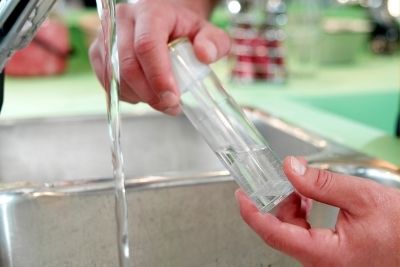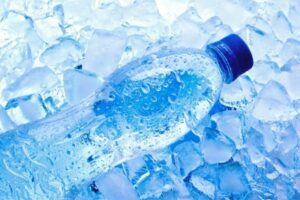Water treatment is an important process from a sustainability point of view.
One of the major components of the water treatment process is aeration. Aerated Water simply means the process by which air is circulated and added to the wastewater. This is done to expedite the process of biodegradation of the pollutants existing in the water.
But, what else goes into water aeration? Is it an important aspect of water treatment? Moreover, when is water aeration used? Let’s find out.


The key to any aeration process in water treatment is an evenly distributed oxygen supply to facilitate the growth of microbes.
What makes the process of aeration even more sustainable is the fact that it does not use any chemicals and relies on microorganisms to biodegrade the pollutants in the water.
As mentioned, aeration is a process that involves microorganisms working together to expedite the biodegradation process.
The air that’s allowed to circulate through water, allows bacteria for treating the wastewater. Bacteria require oxygen to conduct the biodegradation process. This supplied air, containing oxygen, is used by bacteria to break down the organic matter consisting of carbon into carbon dioxide and water.
In case, sufficient oxygen isn’t available, the bacteria does not complete the degradation process in time and there isn’t a complete conversion of the dissolved pollutants. While bacteria can degrade the pollutants even in the absence of oxygen, it is a very slow process, leading to the formation of odor.

If the aeration process is well-designed, it can have a direct impact on the wastewater it can get treated in time. An evenly distributed oxygen in the process is the key to getting an economically viable and effective water aeration process.
The aeration process can be concluded in a variety of ways. Broadly, there are two main categories of aeration in play- subsurface aeration and surface aeration, which are further divided into various types.
As the name suggests, in subsurface aeration, the aeration device is placed below the liquid’s surface. In this, the devices are placed below the water surface and compressed air is released, forming bubbles.
On the other hand, surface aerators involve pushing water from the water’s surface into thin air, and then the droplets from the thin air fall back into the water, mixing in oxygen.
Here are some of the methods which are usually undertaken to complete water aeration.
1. Fine Bubble Diffuser: Fine bubble diffusers are submersible water aeration systems for wastewater treatment. These systems are energy efficient and disperse the diffused gas volume to transfer an equal amount of oxygen as a coarse bubble system.
The fine bubble diffusing technology gradually releases air into water via very fine bubbles. These thousands of bubbles present in water promote the transfer of oxygen to water, maximizing air-water contact.
2. Surface Aeration: When using surface aeration, it is best to ensure that the water is shallow. Moreover, you can also use it in cases where large amounts of oxygen are required immediately. Surface aerators tend to push water to the water’s surface into the air, finally falling back into the water, mixing in oxygen.
3. Coarse Bubble Aeration: These release a large diameter of bubbles to displace, churn, rotate, and mix the wastewater.
Fine pores typically tend to release bubbles with a diameter between 0 to 3 millimeters, while coarse bubble diffusers’ bubbles range from anywhere between 3 mm to 50 mm.
A coarse bubble aeration process is suitable for conventional aeration, highly loaded systems, sludge storage, etc. Moreover, coarse bubble aeration is considered to be highly durable and low maintenance. This makes it a perfect aerator for tough usage.
The water aeration process is a natural process and can be implemented quite easily. However, there are a few other benefits and features of water aeration that you should know about.
1. Water aeration improves the quality of water as it reduces the alkalinity, and pH balance and reduces carbon dioxide.
2. While bacteria are at work in the entire aeration process, the unwanted bacteria in the pond are decomposed.
3. Bacteria can also conduct the aeration process without the help of oxygen. However, it can lead to odor generation. That is why ample and even amounts of oxygen are dissolved in the oxygen to complete the process.
Aeration is a very simple, cost-effective and sustainable method to treat wastewater. If used judiciously and effectively it can help us reduce our reliance on chemical treatment methods. Hence, allowing us to move a step further toward water accessibility.
National Water Service has been providing residential & small commercial water treatment, plumbing & well pump services for over 45 years. We specialize in water treatment, filtration & purification solutions as well as general plumbing to ensure clean, safe water for our customers in Maryland, DC & Northern Virginia.
Mon - Thurs
7:00am - 5:00pm
Friday
7:00am - 4:00pm
Sat - Sun
Emergency Service Available
National Water Servicing Corporation — 2025 All Right Reserved ™